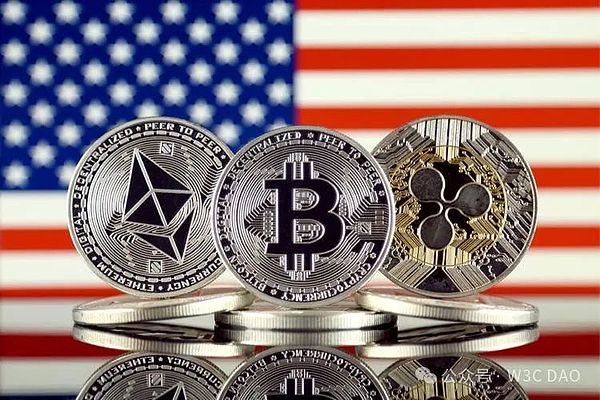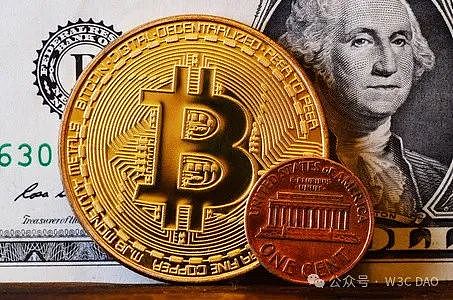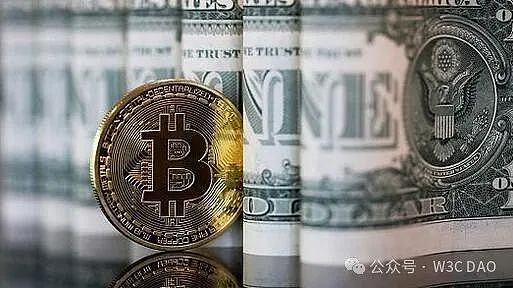The United States Must Embrace Crypto
It is no secret that the topic of Bitcoin and the broader crypto asset space has been a topic of controversy and debate in the United States.
From being ridiculed by nearly every traditional financial institution in the United States to having 11 spot Bitcoin ETFs that have quickly attracted billions of dollars since their inception, it is clear that the U.S. private sector has embraced Bitcoin and tokenized payments.

These institutions include Blackrock, the world's largest asset manager, and J.P. Morgan, the largest and most influential bank in the United States. Meanwhile, investment in Bitcoin continues to hit record highs, and other indicators continue to point to greater interest in the space, such as stablecoin capitalization and the resurgence of the NFT industry.
Despite these positive private sector trends, news, and indicators, resistance from U.S. policymakers remains high. The SEC continues its push to classify nearly all crypto assets as securities, filing a lawsuit against Coinbase (an SEC-registered exchange) and launching a new investigation into organizations doing business with the Ethereum Foundation.
In addition, despite the clear success of Bitcoin and other tokenized assets, politicians continue to argue. Elizabeth Warren has been one of the most vocal anti-crypto politicians in the U.S., and her stance has solidified with the White House’s recent reintroduction of a potential 30% tax on Bitcoin miners.
This divide cannot continue and is entirely counterproductive to a calm conversation around which technologies are best positioned to reshape money and commerce.
The Dollar Is Already Digital
According to a study by the Federal Reserve Bank of San Francisco, only 19% of dollar transactions are conducted using cash, and only 6% by value.
Whatever metric is used to measure the pivot point of dollar-based transactions, the reality is clear: the dollar is already digital. This is not to dismiss the arguments for and against central bank digital currencies (CBDCs), both sides have legitimate concerns that need to be addressed in a productive manner.

However, the debate around CBDCs may obscure the reality that transactions by businesses and individuals are already increasingly digital/virtual in nature.
Against this backdrop, it seems only logical to conclude that as tokenized payments and blockchain-based transactions increase in frequency and value, these technologies will become part of the equation for dollar transactions.
So far, household names including JP Morgan and PayPal have launched tokenized payment products and stablecoins for internal use, respectively. Fighting these trends seems shortsighted.
Money is technology
Building on the first point, it is becoming increasingly clear that money is less about currency (not to mention the obsolescence of physical units) than about technology.
As digitization accelerates across all aspects of the global economy, whether driven by blockchain or other technologies, money is transitioning to yet another technological application.
With digital and virtual transactions accounting for an increasing percentage of total volume and value, and the tokenization of TradFi assets well underway (and led by TradFi institutions), the line between money and technology is almost invisible.

These trends don’t even scratch the surface of the important role that digital and tokenized transactions will play as video games, streaming content, and augmented reality continue to go mainstream. Virtual worlds may have been overhyped at the outset, but augmented and virtual reality continue to improve and represent an almost ideal use case for tokenized/tech money.
The United States has long been a hotbed of technological innovation, and ignoring the evolution of money will be a disservice to consumers and companies.
The Fed is not a privilege
The U.S. enjoys one of the most expensive privileges any country has ever enjoyed, with the U.S. dollar as the global reserve currency.
For nearly 70 years, the U.S. dollar has been the backbone of financial transactions and global markets, and it is almost difficult to imagine a world where this reality is not the case. It is difficult, but it is a mentality that ignores historical precedent. In the past, multiple countries and empires have held the global reserve currency, and the United States is just one of many countries whose currencies have held this status.
As challenges to the U.S. economic and geopolitical strategy continue to emerge and rise, coupled with the digitization of dollar transactions and the rise of the tech nation, the U.S. dollar's reserve currency status should not be taken for granted.

Instead, policymakers should build on the efforts of the private market, incorporate tokenization, embrace the digitization of the dollar, and actively invest in the technological future of currency.
U.S. policymakers should follow the private sector's lead and embrace Bitcoin and other crypto assets rather than fighting the trend.
Final Word
Bitcoin and crypto assets have been controversial in the United States, but the private sector has accepted them.
However, there is still resistance for policymakers, such as lawsuits from the SEC and arguments from politicians.
But as digital and virtual transactions increase, currency is transitioning to another technological application, and the United States should keep up with this trend and embrace the technological future of currency instead of fighting against Bitcoin and other crypto assets.
 Aaron
Aaron
 Aaron
Aaron Jasper
Jasper Catherine
Catherine Clement
Clement Snake
Snake Alex
Alex Kikyo
Kikyo Davin
Davin Jasper
Jasper Hui Xin
Hui Xin